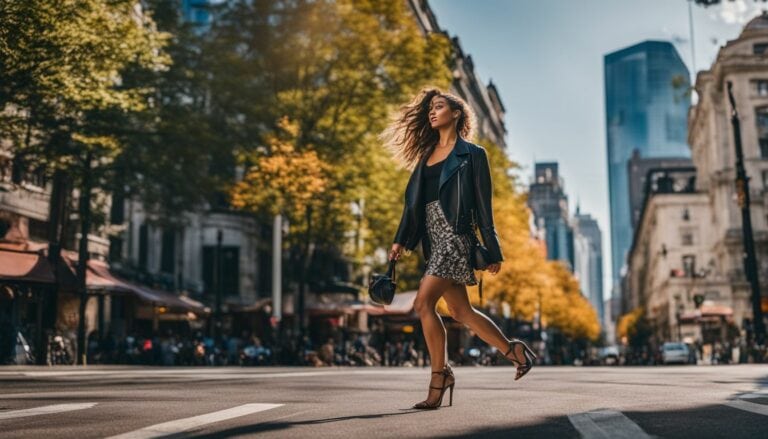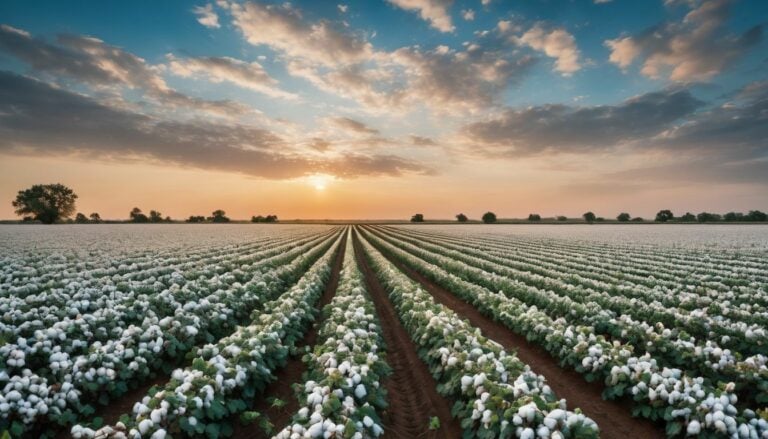What Is Cork Fabric? | An Ethical Alternative to Leather? And Is It Eco Friendly?
Are you on the hunt for sustainable and ethical alternatives to animal leather? Cork Fabric, a recent innovation in eco-friendly textiles, might just be your answer. This article delves into what cork fabric is, its manufacturing process, and why it’s considered an environmentally friendly material.
Keep reading if you’re ready to discover this game-changer in the world of sustainable fashion!
Key Takeaways
- Cork fabric is a sustainable and eco – friendly material made from the bark of cork oak trees.
- It is considered environmentally friendly due to its sustainable harvesting methods, chemical-free production, and biodegradable properties.
- Cork fabric is a vegan and cruelty – free alternative to leather, offering practical benefits such as water resistance, flame resistance, and hypoallergenic properties.
- It has various uses in fashion, interior design, upholstery, footwear, and bags. Brands like Stella McCartney and Matt & Nat incorporate cork fabric into their products.
What is Cork Fabric?
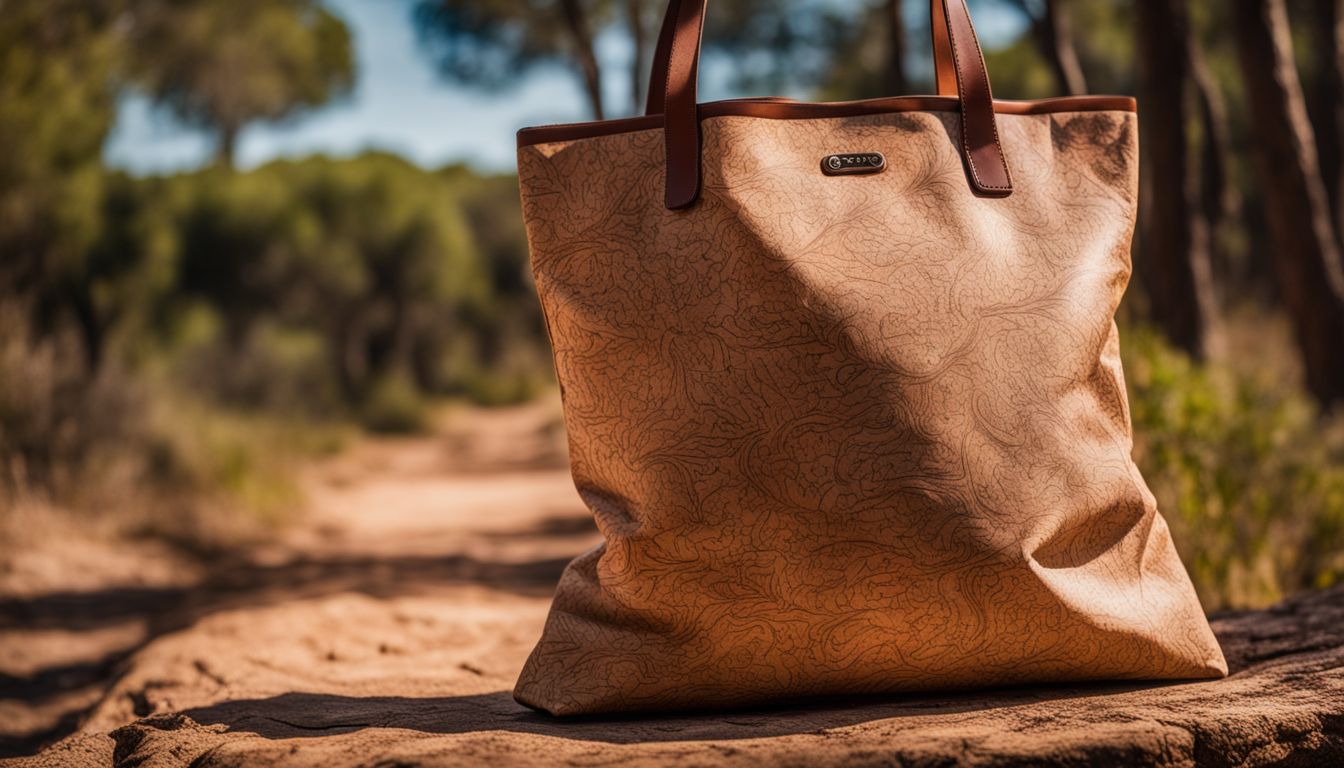
Cork fabric is a sustainable and eco-friendly material made from the bark of cork oak trees that have been harvested in a responsible manner.
Definition and characteristics
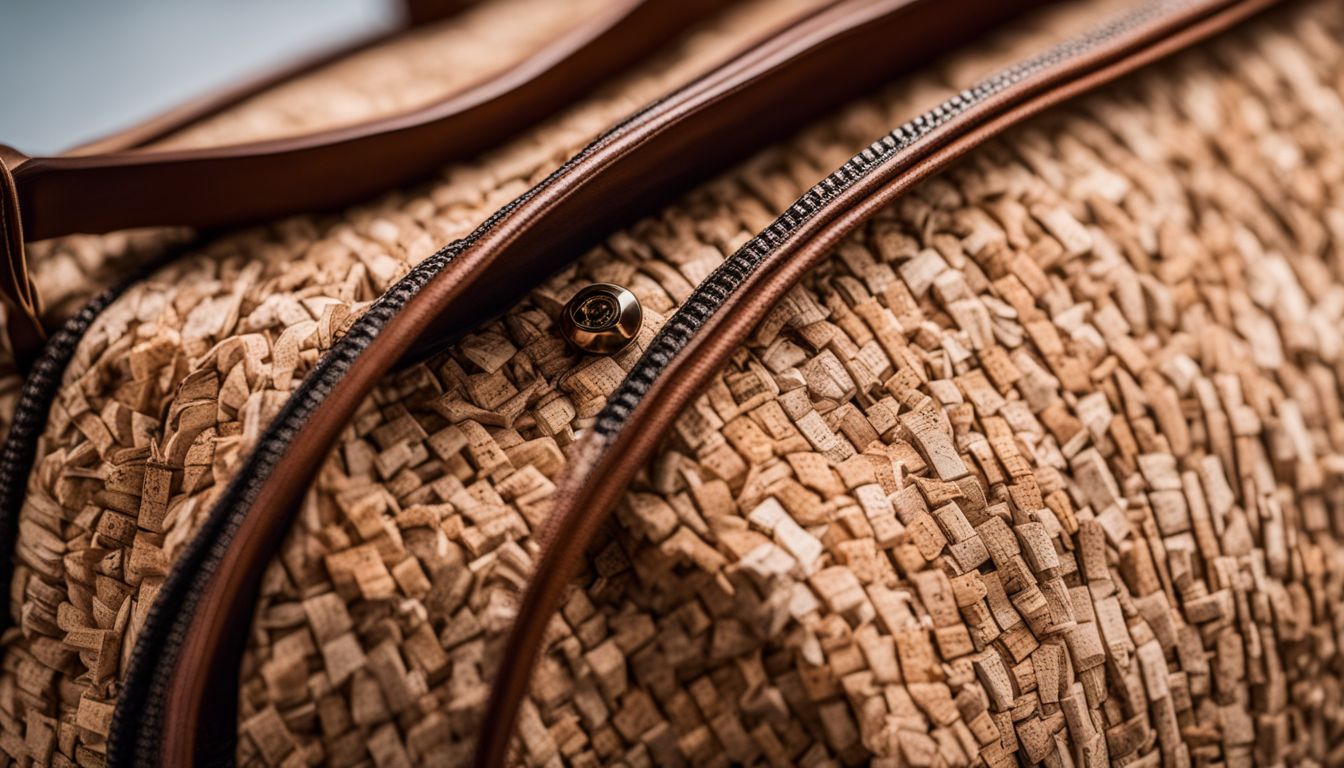
Cork fabric is a type of vegan leather. It comes from the bark of cork oak trees. This bark grows back every 9-10 years, so it’s good for nature. The fabric is shiny and smooth. Over time it gets better looking! It fights off water, fire, and things that make us sick.
It can take a lot and still look great!
Manufacturing process
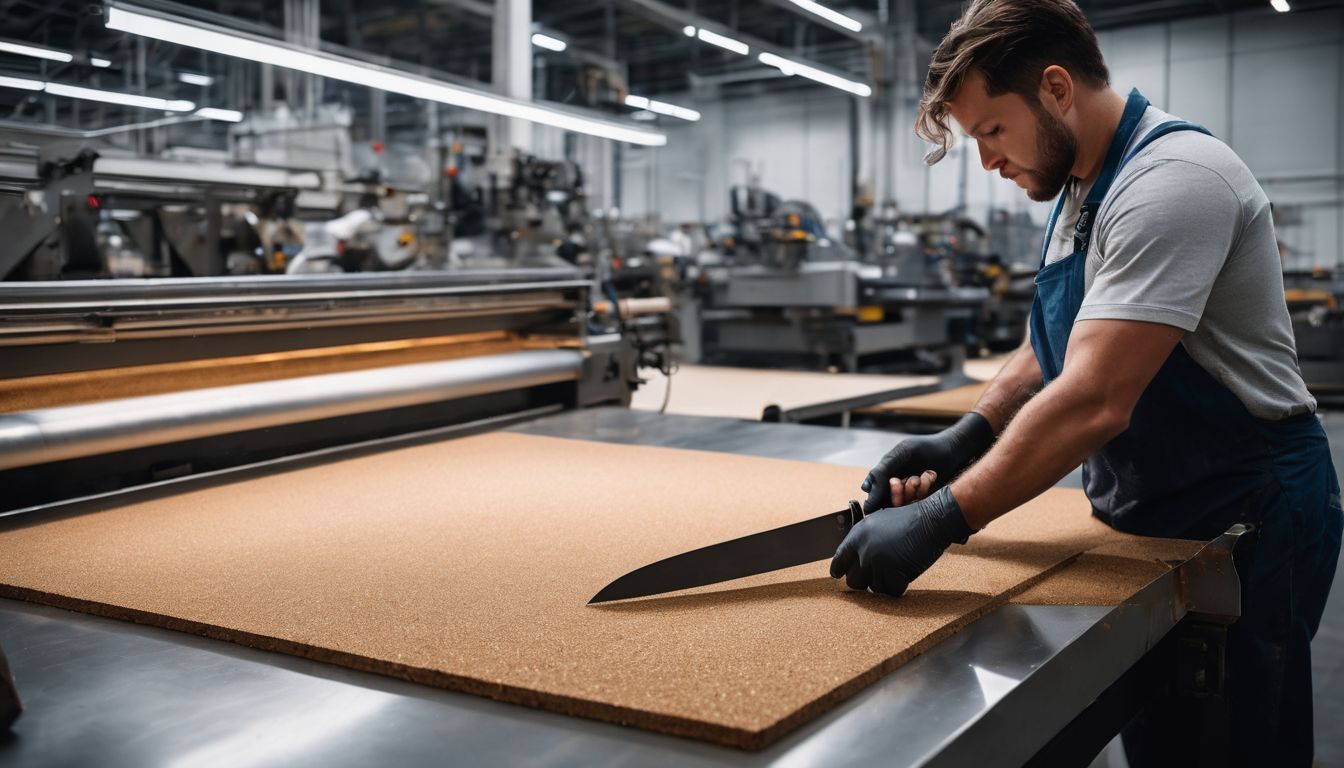
Cork fabric gets made from cork oak tree bark. First, people cut the bark off the tree. They do this every nine to ten years. It does not hurt the tree and it grows new bark after.
This makes it a renewable resource. Next, they boil the bark in water to make it soft and easy to work with. Then they slice it into thin sheets, like paper from a roll of toilet paper.
After that, they stick these sheets onto a backing material using heat and pressure – no toxic chemicals needed! Now you have cork fabric that is smooth and shiny on one side with a tough back support on the other side.
Is Cork Fabric Eco-Friendly?

Cork fabric is considered to be eco-friendly due to sustainable harvesting methods, chemical-free production, and its biodegradable and compostable properties.
Sustainable harvesting of cork trees
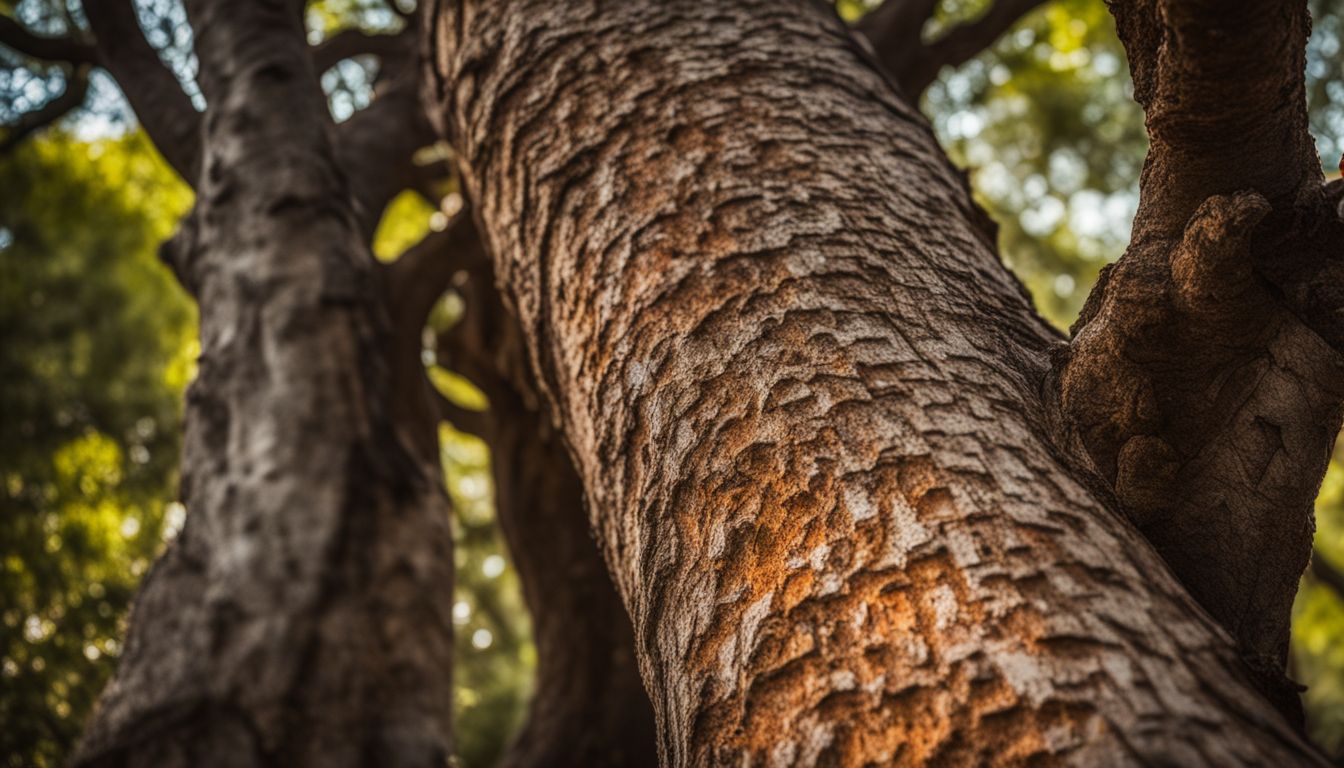
It grows back its bark for next time. This process is good for the tree’s health. It also helps the environment around it by storing lots of carbon dioxide (CO2). So, making cork fabric does no harm to nature and is sustainable!
Chemical-free production
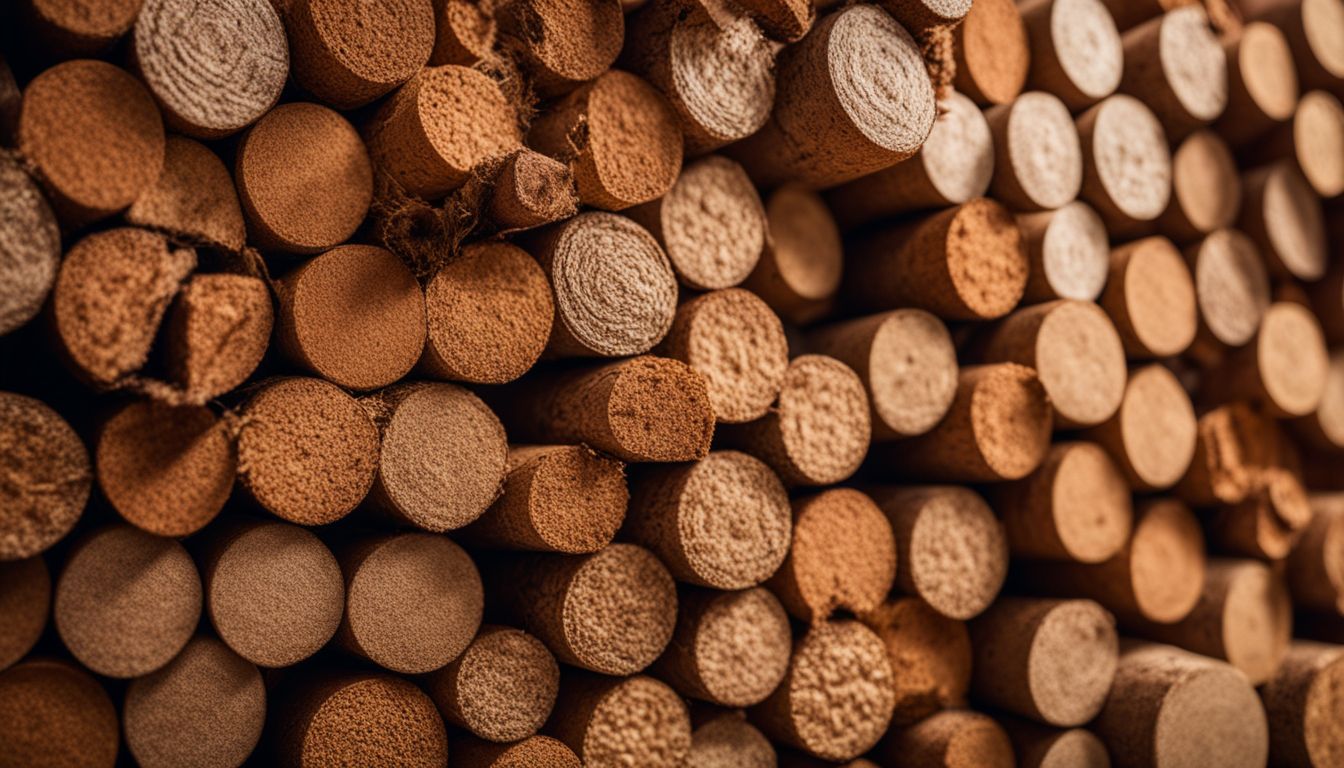
Cork fabric is produced without the use of any toxic chemicals, making it an environmentally friendly choice. Unlike other materials that may require harmful substances for processing, cork fabric production relies on natural methods.
The bark of the cork oak tree is carefully harvested and then processed using non-toxic techniques to transform it into fabric. This chemical-free production ensures that no hazardous substances are released into the environment during manufacturing, making cork fabric a safe and responsible choice for eco-conscious consumers.
Biodegradable and compostable properties
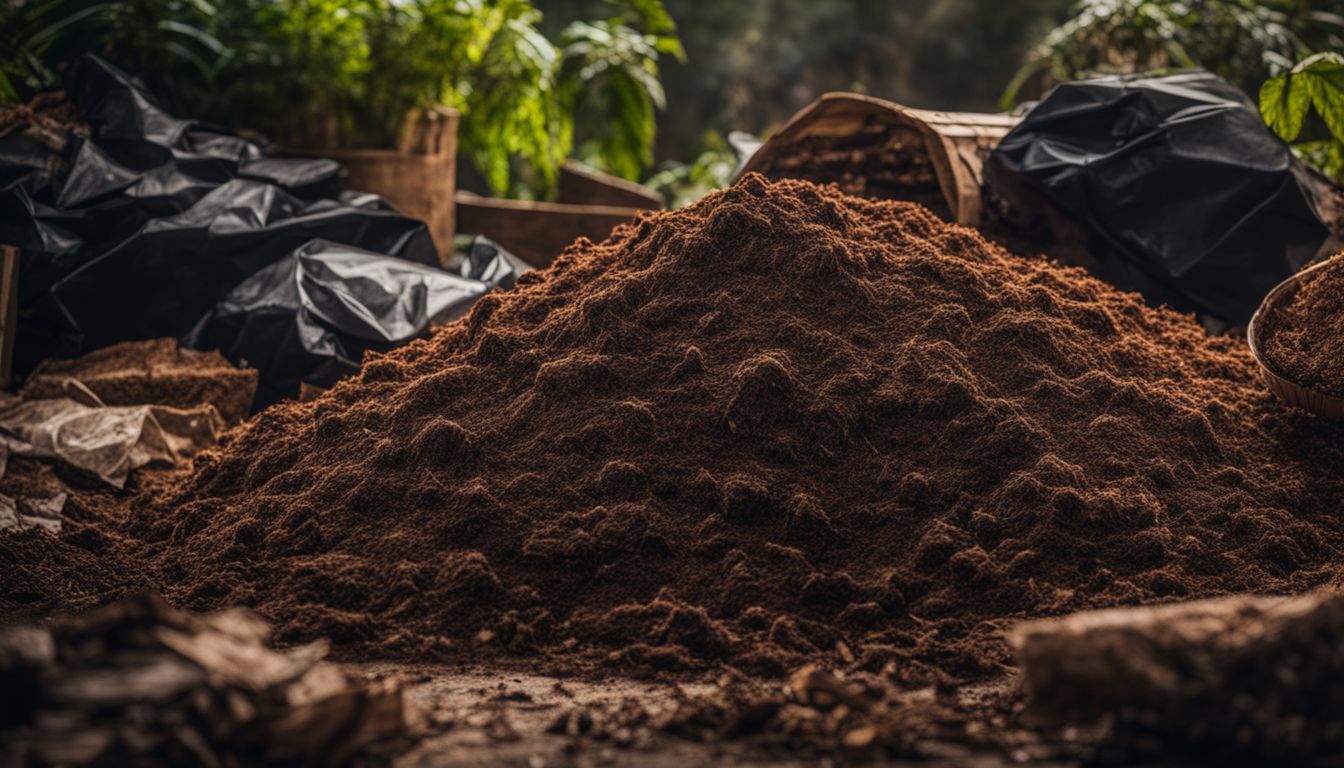
Cork fabric is not only a sustainable and ethical choice, but it also has biodegradable and compostable properties. This means that when disposed of properly, it will break down naturally over time without causing harm to the environment.
Unlike synthetic materials which can take hundreds of years to decompose, cork fabric can be returned to the earth relatively quickly. So if you’re looking for a material that won’t contribute to landfill waste, choosing cork fabric is an eco-friendly option.
Additionally, its compostable nature means that it can be added to compost piles or bins, where it will eventually turn into nutrient-rich soil. By opting for biodegradable and compostable materials like cork fabric, we can make a positive impact on our planet’s health while still enjoying stylish and durable products.
Vegan and cruelty-free alternative to leather
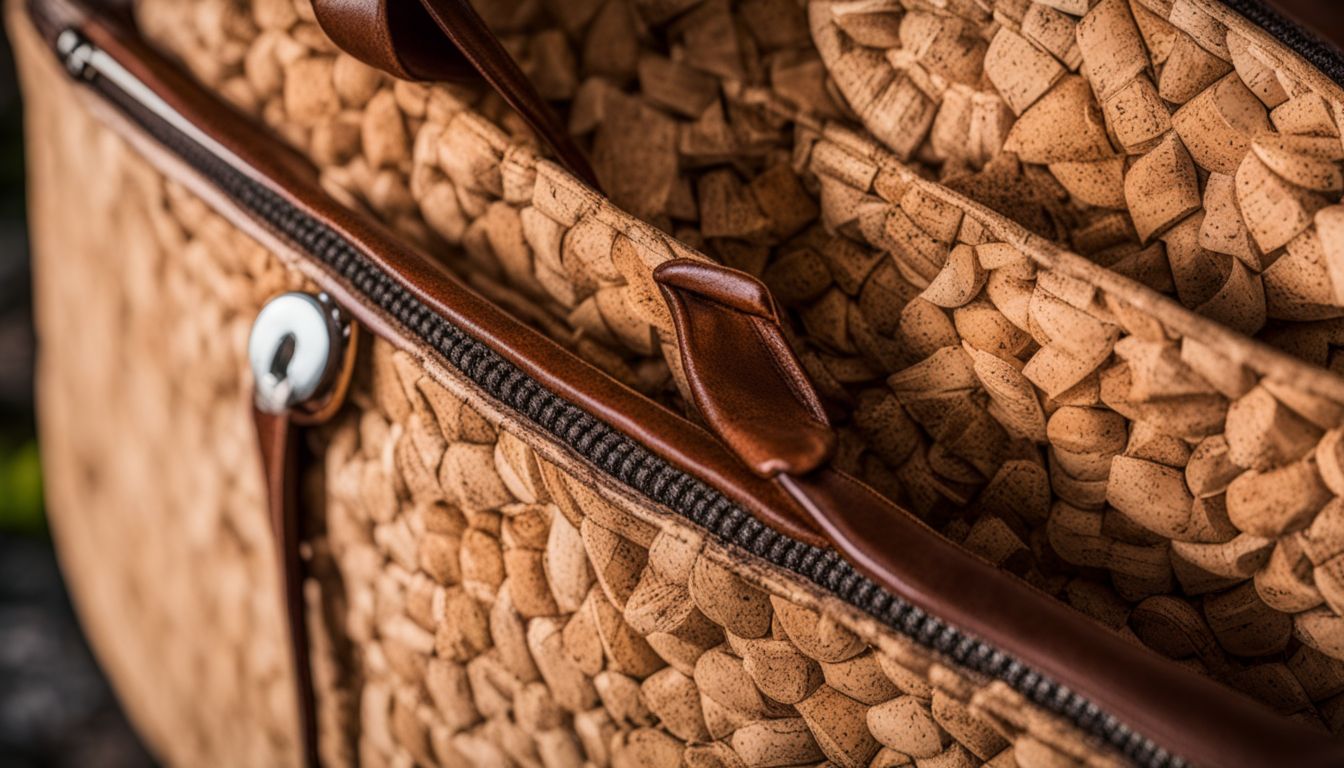
Cork fabric is a vegan and cruelty-free alternative to leather. It is made from the bark of the cork oak tree, which is harvested at a sustainable interval of 9-10 years. Unlike traditional leather production, cork fabric does not involve any harm or exploitation of animals.
This makes it an ethical choice for those who are concerned about animal welfare. Additionally, cork fabric has many advantages over animal leather—it is water-resistant, flame-resistant, and hypoallergenic.
So not only is it a responsible choice, but it also offers practical benefits for consumers.
Discover the Top Sustainable Fabrics for Eco-Friendly Fashion

- Organic cotton: Grown without harmful chemicals, organic cotton reduces environmental impact and supports fair labor practices.
- Hemp: A versatile and durable fabric, hemp requires less water and pesticides compared to other crops.
- Tencel: Made from sustainably harvested wood pulp, Tencel is biodegradable and has a low environmental impact.
- Recycled polyester: Created from post-consumer plastic bottles, recycled polyester helps reduce waste in landfills.
- Linen: Derived from flax plants, linen is a natural, biodegradable fabric that uses less water than cotton.
- Bamboo: Fast-growing and requiring minimal resources, bamboo fabric is soft and breathable.
Uses and Applications of Cork Fabric
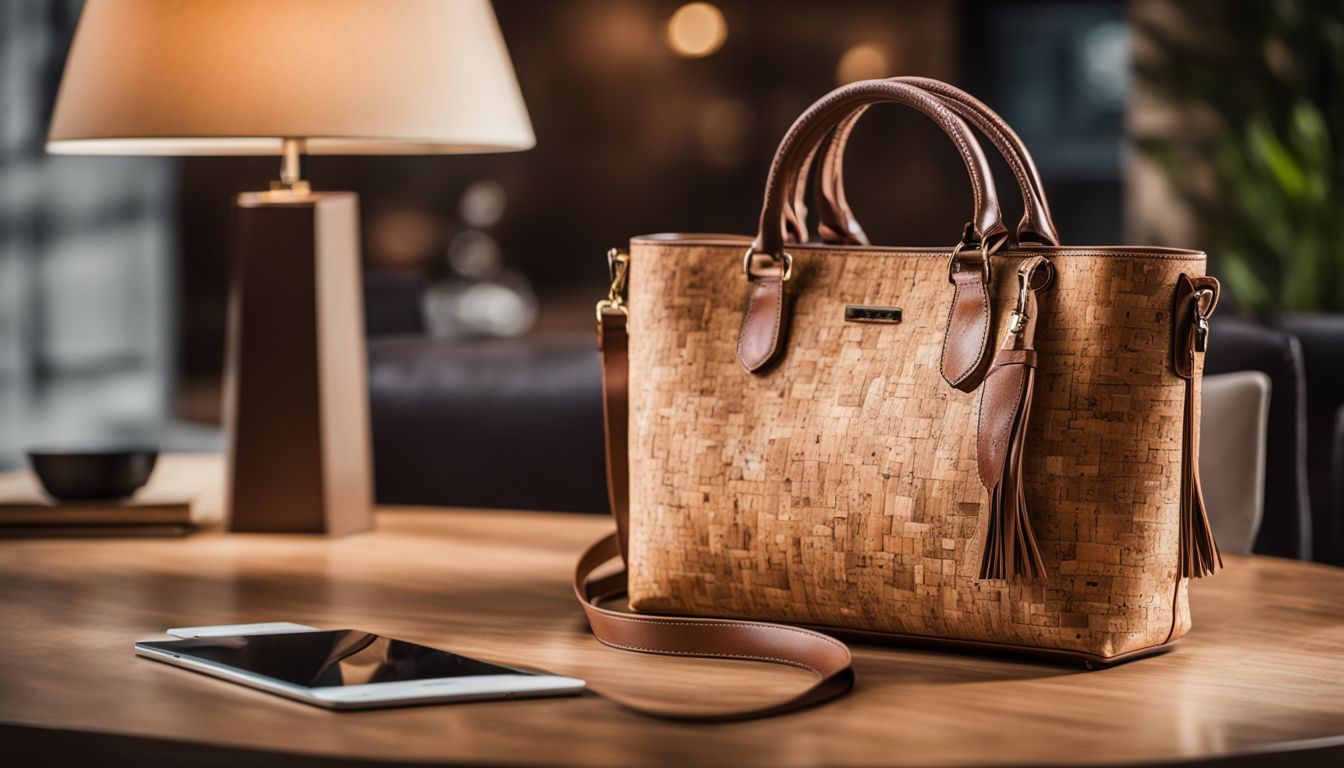
Cork fabric has a wide range of uses and applications, including in the fashion industry for clothing, accessories, and shoes, as well as in interior design for upholstery on furniture and decorative items.
Fashion and accessories

Cork fabric is becoming increasingly popular in the fashion world as a sustainable and vegan alternative to leather. It has a smooth and shiny finish that improves with time, making it an attractive choice for fashion accessories like bags, wallets, and belts.
Cork fabric is also used in clothing, such as jackets and shoes, providing a stylish and eco-friendly option for those who want to make responsible fashion choices. With its water-resistant, flame-resistant, and hypoallergenic properties, cork fabric offers durability and versatility in creating fashionable items that are both ethical and environmentally friendly.
Interior design and upholstery
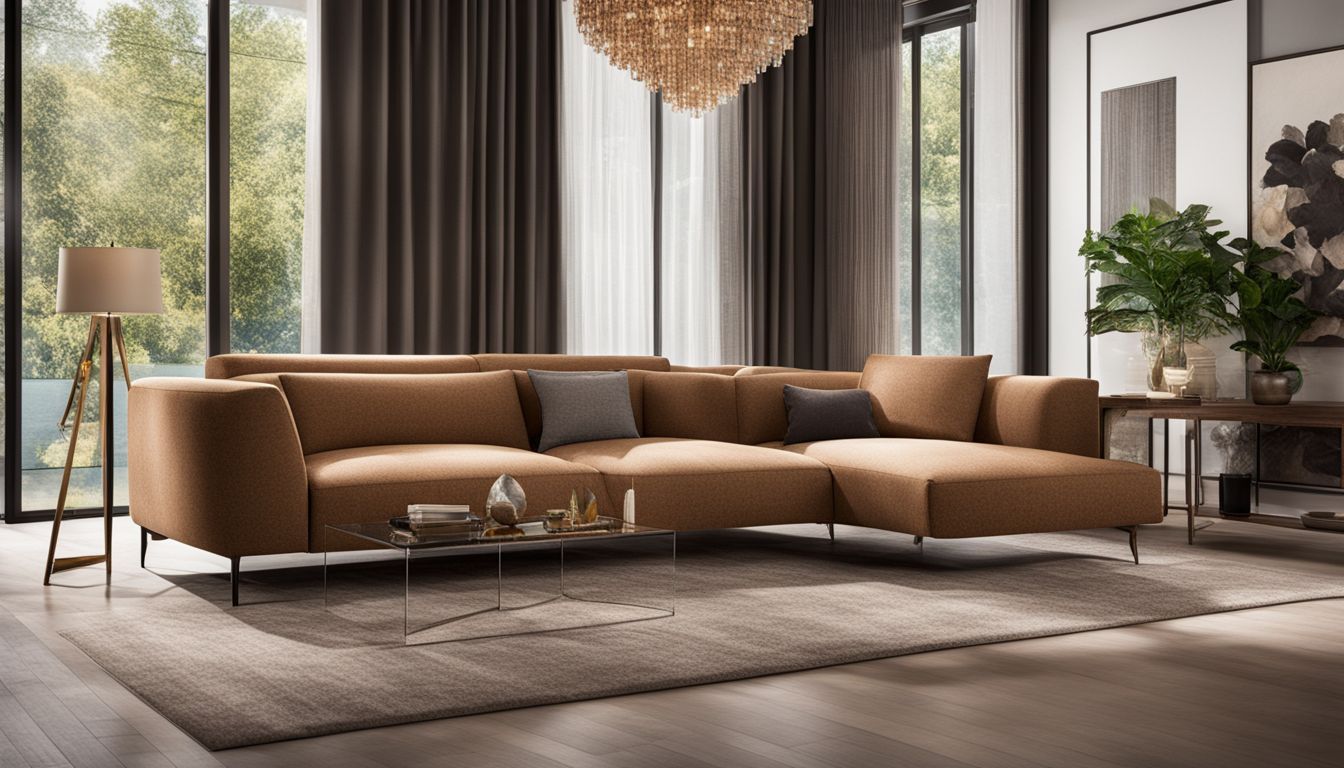
Cork fabric is becoming increasingly popular in interior design and upholstery due to its eco-friendly properties. This natural material adds a unique and stylish touch to furniture, curtains, pillows, and more.
With its smooth and shiny finish, cork fabric enhances the aesthetic appeal of any space. It is also water-resistant, flame-resistant, and hypoallergenic, making it a practical choice for homes or commercial spaces.
Additionally, cork fabric’s durability allows it to withstand wear and tear over time. By choosing cork fabric for interior design and upholstery projects, you’re not only creating a beautiful space but also making an environmentally conscious decision.
Footwear and bags

Cork fabric is commonly used in the production of footwear and bags. Its durable nature makes it suitable for creating long-lasting shoes, sandals, and boots that can withstand regular wear and tear.
The water-resistant property of cork fabric also helps to keep feet dry in wet conditions. Bags made from cork fabric are not only stylish but also lightweight and practical. They come in various designs, from tote bags to backpacks, providing a sustainable alternative to traditional leather bags.
With cork fabric’s natural shine and smooth finish, both footwear and bags made from this material offer a unique and eco-friendly option for fashion-conscious individuals.
Caring for Cork Fabric
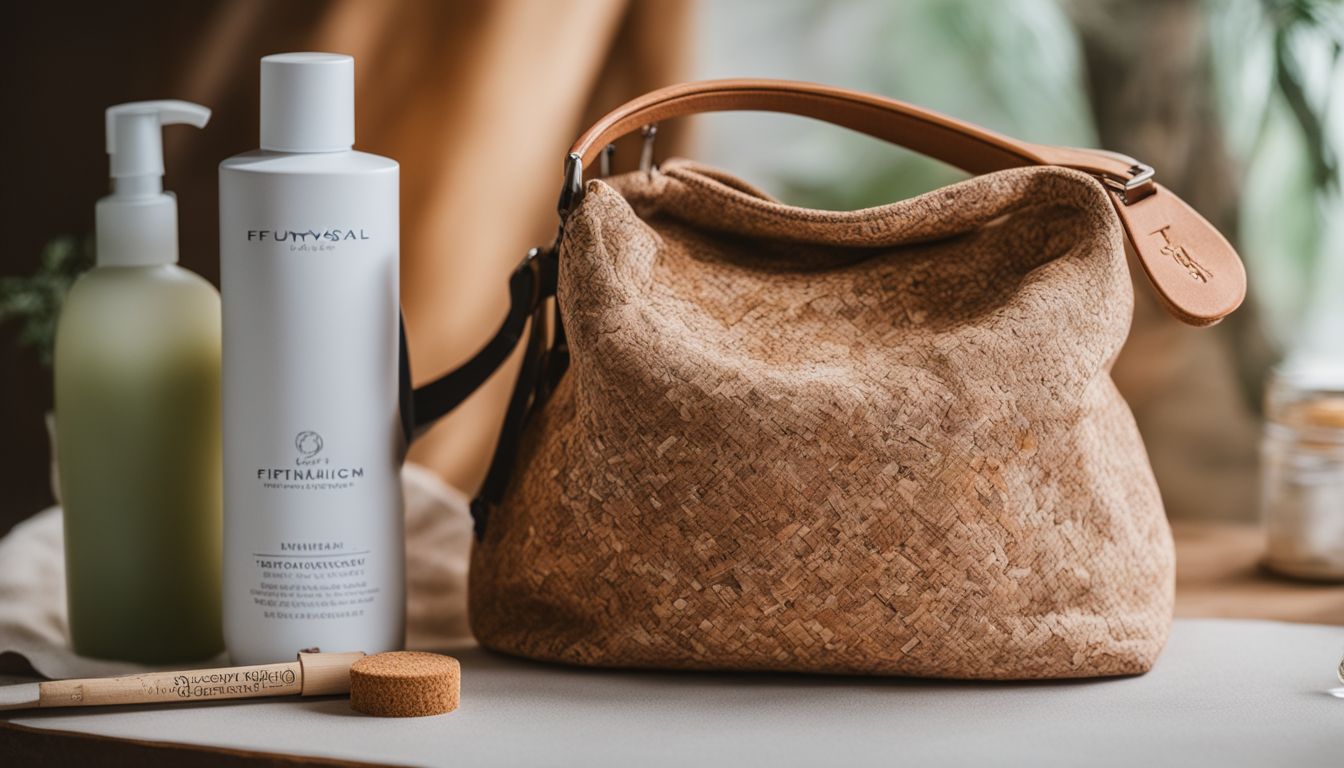
To keep cork fabric looking its best, gently wipe it clean with a damp cloth and avoid using harsh cleaning products.
Cleaning and maintenance tips

To keep your cork fabric items looking their best, follow these simple cleaning and maintenance tips:
- Wipe gently with a soft cloth: Use a clean, damp cloth to wipe away any dirt or spills from the surface of the fabric. Avoid scrubbing too hard to prevent damage.
- Mild soap solution: For tougher stains, mix a small amount of mild soap with water and apply it to the affected area using a soft cloth. Rinse with clean water and allow to air dry.
- Avoid excessive moisture: While cork fabric is water-resistant, it’s best to avoid prolonged exposure to moisture or submerging it in water. This can help maintain its integrity and prevent warping or discoloration.
- Store properly: When not in use, store your cork fabric items in a cool, dry place away from direct sunlight. This will help preserve their shape and prevent fading.
- Treat with cork sealant (optional): If desired, you can apply a cork sealant to enhance water resistance and protect against stains. Follow the manufacturer’s instructions for application.
Longevity and durability
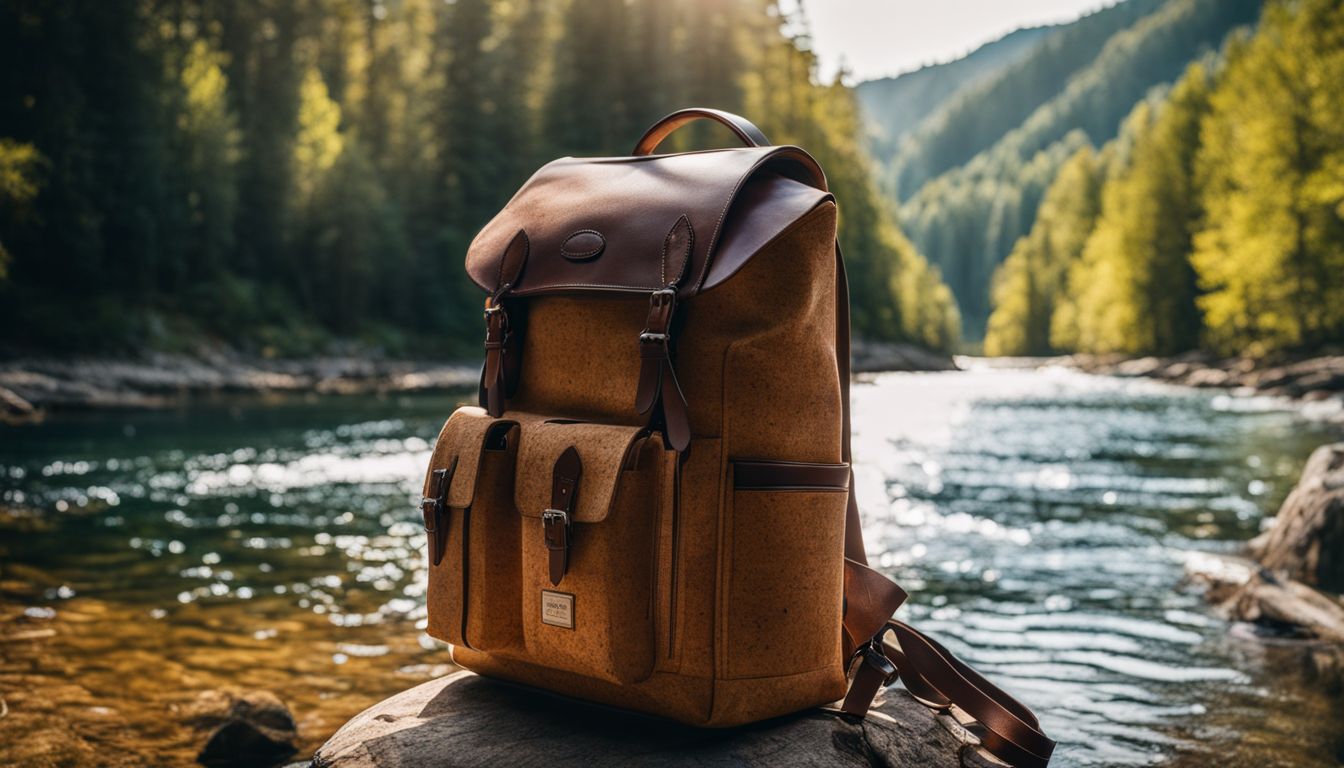
Cork fabric is known for its longevity and durability, making it a reliable choice for various applications. This eco-friendly material can withstand wear and tear, allowing it to last for a long time.
As the cork oak tree continues to grow and produce bark after harvesting, cork fabric is considered a renewable resource. It has natural properties that make it resistant to water and flames, as well as hypoallergenic.
With its smooth and shiny finish that improves over time, cork fabric offers both style and practicality without compromising sustainability.
Brands and designers using cork fabric
Many brands and designers have recognized the benefits of cork fabric and are incorporating it into their products. For example, fashion labels like Stella McCartney and Matt & Nat have used cork fabric in their handbags and accessories.
Corkor is a brand that specializes in cork products, offering a wide range of wallets, bags, and even shoes made from this sustainable material. In interior design, you can find furniture upholstered with cork fabric by companies like Sancal.
These brands and designers are leading the way in using cork fabric to create stylish and environmentally friendly products for consumers to enjoy.
Conclusion

In conclusion, cork fabric is a sustainable and eco-friendly alternative to leather. It is made from the bark of cork oak trees, harvested in a responsible way every 9-10 years. With its chemical-free production and biodegradable properties, cork fabric offers an ethical choice for those looking to be more environmentally conscious in their fashion choices.
FAQs
1. What is cork fabric?
Cork fabric, also known as cork leather or cork fabric leather, is a material made from the bark of the cork oak tree that has been processed and transformed into sheets or rolls for various applications.
2. Is cork fabric eco-friendly?
Yes, cork fabric is considered eco-friendly because it is a sustainable and renewable resource. The harvesting process does not harm the trees since only the outer bark is removed, allowing the tree to regenerate.
3. How durable is cork fabric?
Cork fabric is highly durable and can withstand wear and tear over time. It’s resistant to moisture, stains, scratches, and fading, making it suitable for various products like bags, wallets, and upholstery.
4. Can I clean and maintain cork fabric easily?
Yes, cleaning and maintaining cork fabric are relatively easy tasks. You can remove dirt or stains with mild soap and water using a soft cloth or sponge. Regularly applying a protective wax coating helps preserve its appearance and durability.


